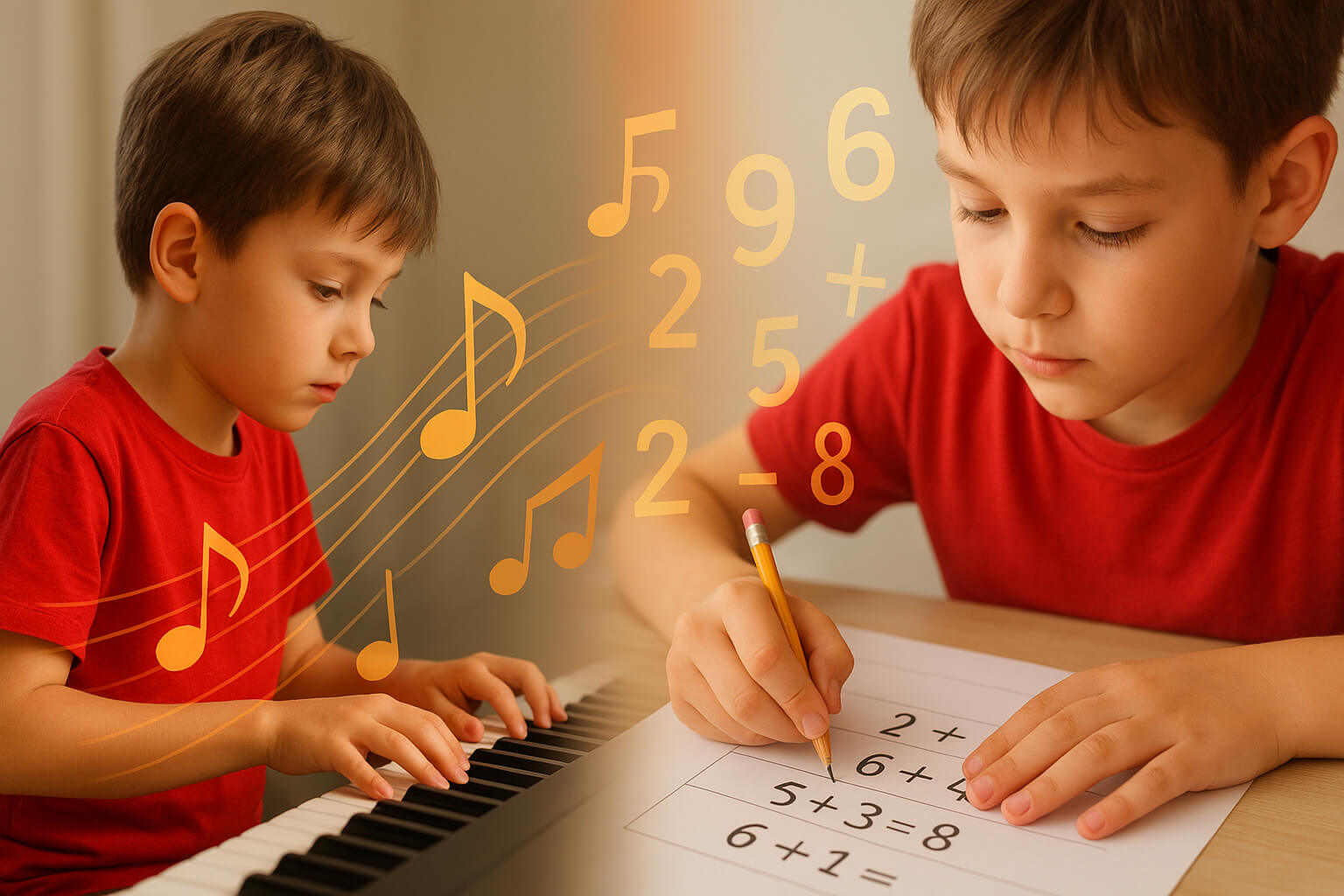August 14, 2025

Many people think of music and math as opposites — one emotional and creative, the other logical and structured. But in reality, the two are deeply connected. Throughout history, music has been built on mathematical principles, and today, research continues to show that learning music can enhance your ability to think mathematically.
From rhythm and fractions to patterns and memory, here’s how music naturally strengthens the brain’s math muscles — and why educators are bringing melodies into the math classroom.
At its core, music is organized sound, and that organization follows mathematical structure:
When students learn to read music, they’re not just learning to play — they’re also practicing fractions, sequencing, and ratio recognition. Understanding a 4/4 time signature, for example, is akin to grasping division: four beats per measure, with each beat subdivided.
Related resource: The Ultimate Guide to Music Reading for Beginners breaks down note values and timing in beginner-friendly terms.
Playing an instrument is an active thinking process. Musicians constantly make micro-decisions:
This type of real-time decision-making mirrors the problem-solving process in math, where students must think ahead, test solutions, and make adjustments.
In the digital music world, tools like Digital Audio Workstations (DAWs) require creators to work with grids, beats, and tempo. Editing a track means understanding time, dividing measures, and syncing sounds — all while using mathematical precision.
Explore more: Digital Audio Workstations Explained offers insight into how DAWs teach timing, structure, and logic through music production.
Math and music both depend on pattern recognition. In music:
When learners train their ears and hands to recognize these patterns, they’re also building skills that support algebra, geometry, and even calculus — all of which involve analyzing and applying patterns.
Additionally, music practice develops working memory. Musicians must hold multiple elements in mind at once: pitch, rhythm, tempo, hand placement — just like students solving multi-step math equations.
Scientific studies using brain scans have revealed that playing music activates both hemispheres of the brain:
By engaging both sides at once, music helps build stronger neural connections. These connections support flexible thinking, which is crucial in mathematics.
Fun fact: Ear training and pitch recognition involve interpreting frequency — a physical, measurable property — reinforcing mathematical ideas of ratios and waves.
Learn more: How to Develop Perfect Pitch shows how ear training exercises strengthen musical and mathematical listening skills.
Teachers are increasingly turning to music-based methods to make abstract math ideas more tangible:
Music transforms math into something kinesthetic, auditory, and fun — particularly helpful for students who struggle with traditional number-focused approaches.
Try this: Use rhythm-building games or music notation tools to demonstrate how 1/4 + 1/8 + 1/8 = 1/2 in an engaging, real-world context.
Music and math are more than compatible — they’re mutually reinforcing. Practicing music develops:
Whether you’re composing a beat, sight-reading piano music, or producing loops in a DAW, you’re training your brain to think mathematically — without even realizing it.
So if you want to become sharper at solving equations, understanding ratios, or thinking logically, you might just want to start by picking up an instrument.
Stay up to date with the latest tips, expert insights, product reviews, and step-by-step guides to help you grow, create, and succeed—no matter your industry or passion.